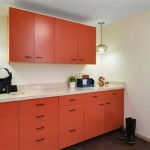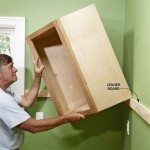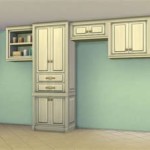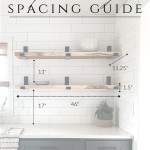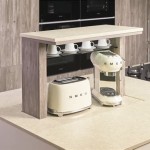Mastering Kitchen Drawer Organization: Strategies for Functionality and Efficiency
Kitchen drawers, often overlooked in the grand scheme of kitchen design, are crucial for maintaining an organized and efficient workspace. A well-organized drawer system not only improves the aesthetic appeal of the kitchen but also significantly reduces the time spent searching for necessary utensils, tools, and gadgets. Effective drawer organization involves careful planning, thoughtful selection of organizational tools, and consistent maintenance. This article explores various strategies and techniques for achieving optimal kitchen drawer organization.
Assessing Current Drawer Usage and Needs
Before implementing any organizational system, a thorough assessment of current drawer usage is imperative. This involves emptying each drawer completely and sorting its contents. Categorization of items is a critical step in this process. Common categories include cutlery, cooking utensils, food storage containers, food preparation tools (such as measuring cups and spoons), and miscellaneous items.
Following categorization, a critical evaluation of each item's necessity is crucial. Items that are rarely or never used should be discarded, donated, or stored elsewhere. This decluttering process helps to free up valuable drawer space and prevents unnecessary accumulation. The remaining items should be grouped according to their frequency of use. Items used most often should be placed in easily accessible locations, while less frequently used items can be stored in drawers that are less conveniently located.
The size and configuration of existing drawers must also be considered. Deep drawers are suitable for storing larger items, such as pots and pans, while shallow drawers are ideal for cutlery and smaller utensils. Understanding the dimensions of each drawer allows for the selection of appropriate organizational tools that maximize space utilization.
Implementing Effective Organizational Solutions
Once the assessment phase is complete, the implementation of organizational solutions can begin. Several options are available, each offering unique benefits depending on the specific needs and layout of the kitchen. Drawer dividers, inserts, and organizers are key components in creating a functional and efficient drawer system.
Drawer dividers are vertical or horizontal partitions that separate the drawer into distinct compartments. These dividers can be made from various materials, including wood, plastic, and metal. Adjustable dividers offer flexibility, allowing for customization to accommodate different sizes and shapes of items. Fixed dividers provide a more permanent organizational structure and are suitable for items that are consistently stored in the same configuration.
Drawer inserts, such as cutlery trays and utensil organizers, are pre-designed solutions that fit within drawers to provide designated spaces for specific items. Cutlery trays typically feature individual slots for knives, forks, spoons, and other eating utensils, preventing them from becoming tangled and creating a neat and orderly arrangement. Utensil organizers offer similar compartmentalization for cooking utensils, such as spatulas, whisks, and ladles.
Consider using modular containers and bins within drawers for smaller, loose items like snack bags, rubber bands, or small kitchen gadgets. Clear containers allow for easy identification of contents, and modular designs allow for a customized and adaptable organization system. Non-slip mats can be placed at the bottom of drawers to prevent items from sliding around, reducing noise and potential damage.
Specialized organizers are available for specific types of items. Knife blocks designed for drawer storage offer a safe and space-saving alternative to traditional countertop knife blocks. Spice drawer organizers, either tiered or horizontal, allow for easy visibility and accessibility of spices. Pot and pan organizers, often featuring adjustable dividers, can be used in deep drawers to prevent cookware from stacking and becoming difficult to retrieve.
When selecting organizational tools, it's essential to choose materials that are durable, easy to clean, and compatible with the overall aesthetic of the kitchen. Consider the long-term durability of the materials and their ability to withstand regular use and cleaning. Wood organizers offer a classic and elegant look, while plastic organizers are typically more affordable and easier to maintain. Metal organizers provide a modern and industrial aesthetic and are resistant to staining and corrosion.
Maintaining Organization and Optimizing Space
Implementing an organizational system is only the first step. Maintaining that organization requires consistent effort and a commitment to good habits. Regularly decluttering drawers and returning items to their designated spaces are essential for preventing clutter from accumulating. A simple rule of thumb is to put an item back where it belongs immediately after using it.
Periodic audits of drawer contents are necessary to identify and remove items that are no longer needed or used. This process should be conducted at least once every few months. During these audits, evaluate the effectiveness of the current organizational system and make adjustments as needed. As usage patterns change or new items are acquired, the drawer configuration may need to be modified to accommodate these changes.
Vertical storage solutions can be implemented within drawers to maximize space utilization. Stacking containers and organizers can create additional storage levels, particularly in deep drawers. Adjustable shelves or risers can also be used to elevate items, making them easier to reach and preventing them from being buried beneath other items.
Consider the ergonomics of drawer placement. Frequently used items should be stored in drawers that are easily accessible and at a comfortable height. Heavy items should be placed in lower drawers to reduce the risk of straining or injury when lifting them. Lightweight items can be stored in upper drawers.
Labeling drawers and compartments can be helpful, especially for items that are not immediately visible. Labels can be applied directly to the drawer front or to the dividers within the drawer. This practice can assist in maintaining organization, particularly in shared kitchens or households with multiple users.
Maximize the use of drawer sides and backs by attaching small hooks or organizers. These can be used to store items such as measuring spoons, small utensils, or pot lids. This strategy takes advantage of otherwise unused space and provides additional storage options.
Optimizing drawer organization is an ongoing process that requires continuous evaluation and adjustment. By implementing effective organizational solutions, maintaining good habits, and regularly assessing drawer contents, it's possible to create a kitchen drawer system that is both functional and efficient. The result is a more organized, streamlined, and enjoyable cooking experience.
In addition to the above strategies, consider the following tips for specific drawer types: For cutlery drawers, using a tiered organizer can maximize space and allow for storing more items in a smaller footprint. For utensil drawers, grouping similar utensils together (e.g., spatulas, spoons, whisks) can make it easier to find the right tool for the job. For food storage container drawers, matching lids to containers and nesting containers when possible can save significant space. For spice drawers, arranging spices alphabetically or by cuisine can make it easier to locate specific spices quickly.
Finally, remember that the ideal kitchen drawer organization system is one that is tailored to individual needs and preferences. Experiment with different organizational tools and techniques to find what works best. By investing time and effort into organizing kitchen drawers, the kitchen will be more efficient and enjoyable to use.

20 Space Saving Kitchen Drawer Organization Ideas A Cultivated Nest

Top Small Kitchen Drawer Organization Tips Living Well Mom

How To Organize Kitchen Drawers Hallstrom Home

12 Creative Kitchen Drawer Organizing Ideas You Will Love The Cottage Market

My Top 10 Tips For Organizing Your Kitchen Drawers The Homes I Have Made

Kitchen Drawer Organization How To Organize Your Drawers Organizing Ideas S

15 Kitchen Drawer Organizers For A Clean And Clutter Free Décor

How To Organize Your Kitchen Drawers 20 Ideas Tame The Clutter Practically Functional

Decluttered Kitchen Best Drawer Organizers Kelley Nan

70 Practical Kitchen Drawer Organization Ideas Shelterness
Related Posts


